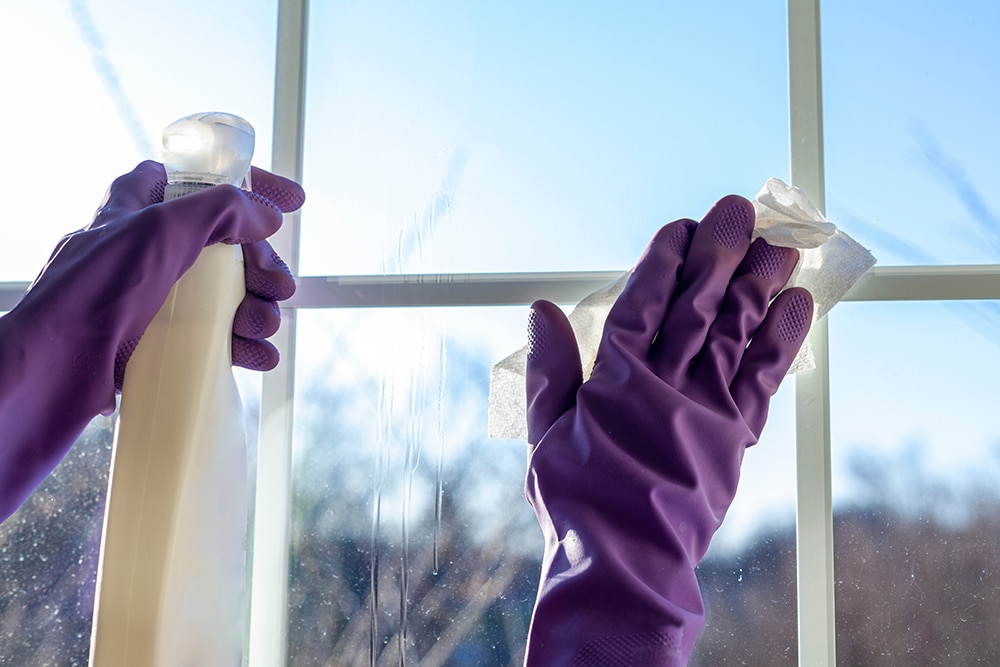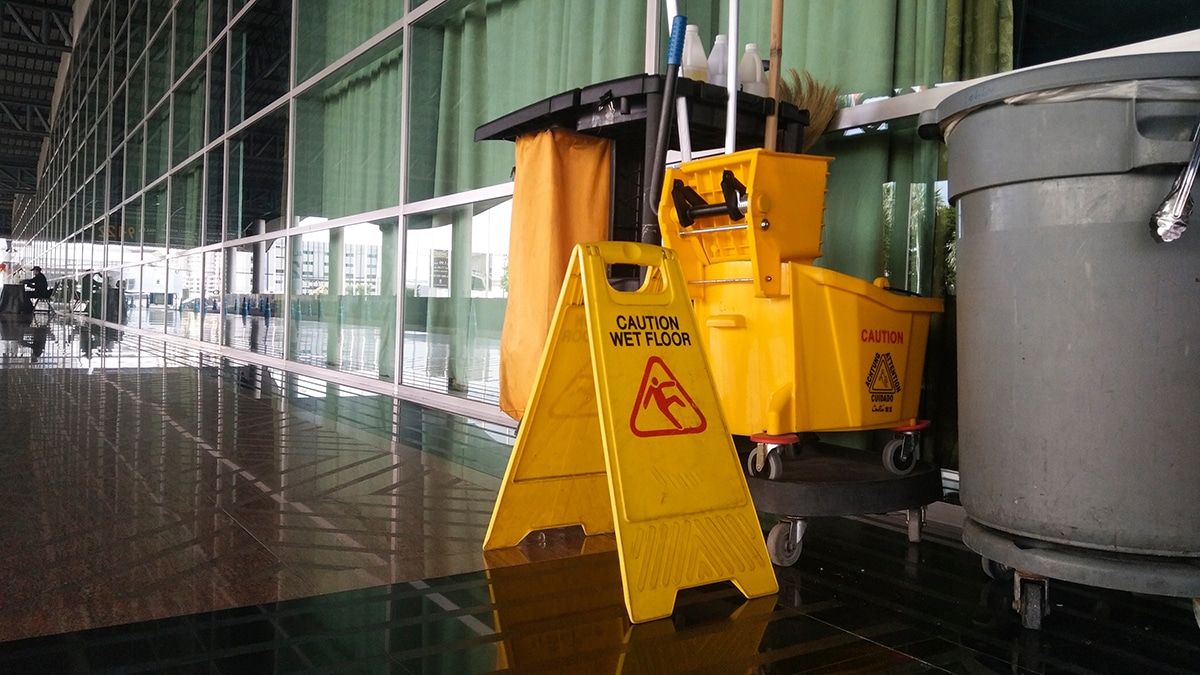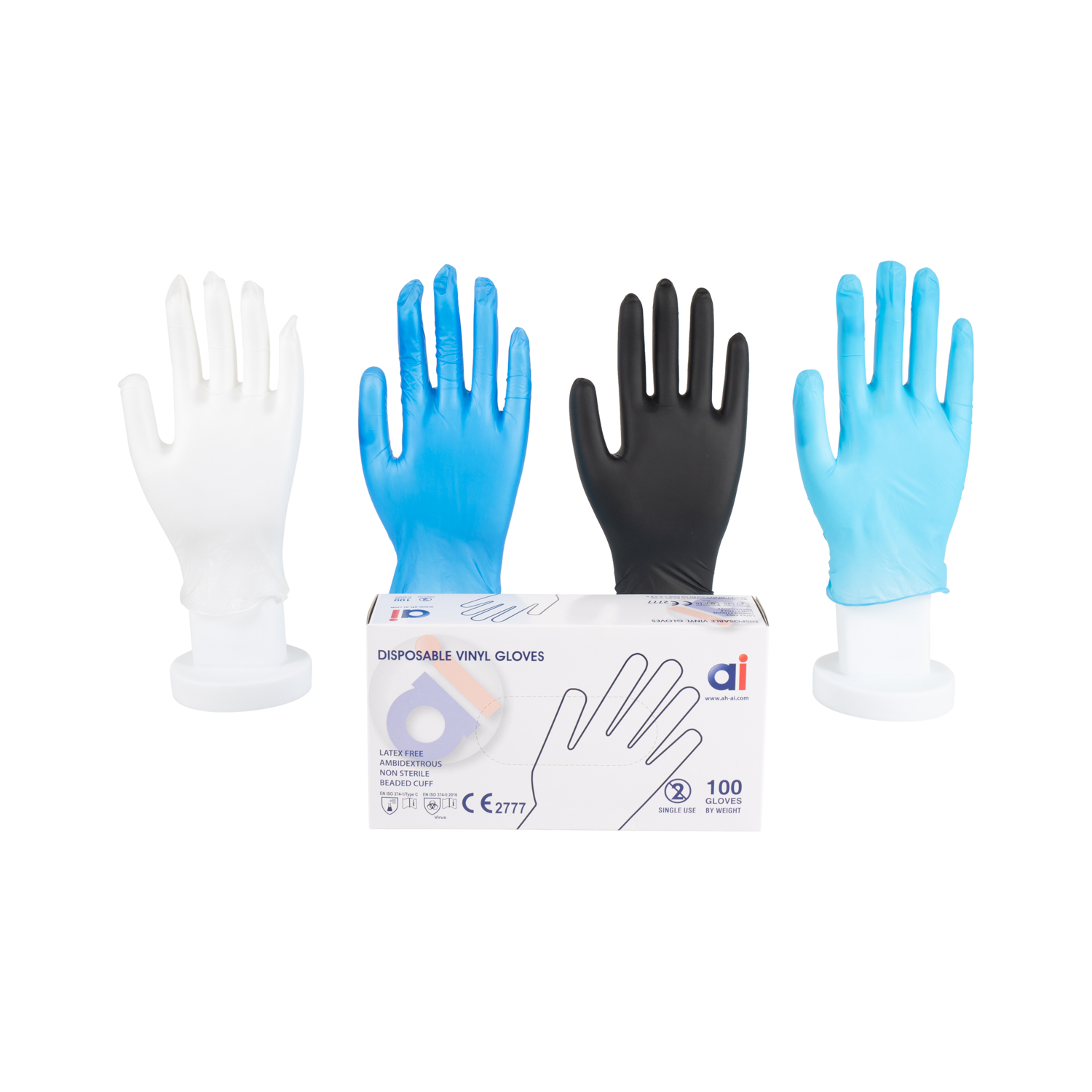
Cleaning products make our workplaces and homes safer by removing potentially hazardous dirt, grime, germs, and assorted detritus from the environment. But what about the people doing the cleaning?
Hazards are part of the daily routine for janitorial and sanitation workers, who must deal with potentially harmful chemicals that can be found in cleaners for glass, metal, and other substances, including hydrofluoric acid, nitrilotriacetate, and phosphoric acid.
Then there are bloodborne pathogens. The federal Occupational Safety and Health Administration established in 1992 its standard to ensure that workers are protected. While initially intended for healthcare workers, it is relevant to jan/san employees as well.
Considering these risks, janitorial employees need barrier protection. Not only that, but many of their tasks also require frequent glove changes. If they are cleaning toilets, for instance, they should don a new pair of gloves before cleaning sinks to avoid transferring pathogens from one to the other.
The three primary glove materials typically used in jan/san environments all have attributes that make them suited for cleaning:
Vinyl gets the job done, and that’s about it
Gloves made from polyvinyl chloride (PVC) are most commonly used in jan/san applications. They are an inexpensive alternative to latex and nitrile gloves.
Vinyl gloves are almost universally 3 mils thick. They can withstand hydrofluoric, phosphoric, and 10 percent concentrated nitric acid, among other chemicals typically present in janitorial applications. You should always confirm by conducting chemical resistance on-site testing of any glove before use.

The most popular vinyl gloves AIC carries are X3 Clear Vinyl (GPX3). They have a loose, relaxed fit when compared with compared with other materials. They are the least expensive but also provide less barrier protection.
Nitrile and latex: better protection, comfort
Nitrile gloves provide superior chemical resistance and stand up to harmful solvents such as 38 percent concentrated hydrochloric acid, 2-butoxyethanol, and sodium hypochlorite. These latex-free gloves are made from nitrile butadiene rubber, a durable synthetic that is highly resistant to punctures and tears.
X3 Black Nitrile (BX3) and X3 Blue Nitrile (X3) are preferred for jan/san use. Like vinyl, they are 3 mils thick, but they also deliver a higher degree of barrier protection. An appropriate choice for tasks that require frequent glove changes, they do feature higher levels of comfort, tactile sensitivity, and dexterity than vinyl gloves.
AIC Professional exam-grade gloves are another possibility for the jan/san worker. They provide even better protection than X3 as well as resistance to fentanyl for up to 240 minutes based on the ASTM D6978 standard. Choose from blue (ACNPF or APFN), indigo (AINPF), or black (ABNPF).
Caveat emptor applies to latex
Natural rubber latex gloves also stand up to many of the chemicals common in the janitorial industry, especially those that are water-soluble, and they provide dependable tear and puncture resistance.
Latex offers the best fit, feel, dexterity, and tactile sensitivity of all the materials. Both X3 Ivory Latex (LX3) and Gloveworks Ivory Latex (TLF) are great choices for jan/san. Latex gloves, however, expose users to latex proteins; repeated exposure to the material can lead someone to develop a latex allergy. Reactions can range from dermatitis to anaphylaxis.
AIC has the gloves that jan/san workers need to give them a leg up on hand protection. Want to learn more? Let us help you choose the right glove for the job.



